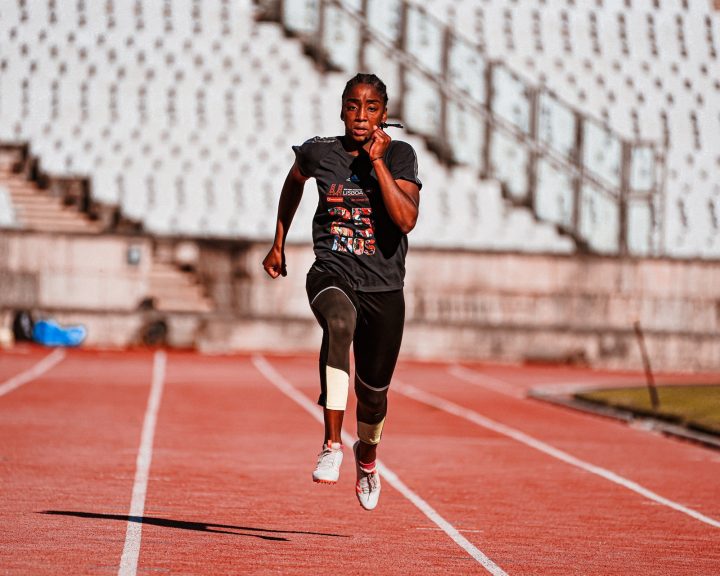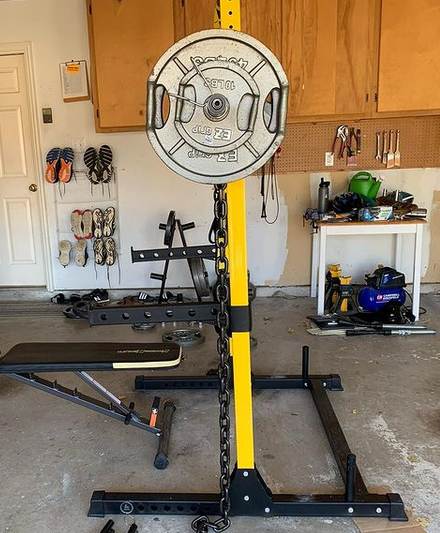Schache et al, published in the April issue of Medicine and Science in Sports and Exercise, conducted a study investigating how each of the three hamstring muscles experience sprinting. The authors studied seven sprinters (five males and two females) who were sprinting at an average of 8.95 meters/second in the study (this equates to 11.17 second 100 meter sprint). The athletes were studied running 80 meters of a 110 meter indoor track in terms of kinematics and kinetics. The authors studied the following muscles: semimembranosus, semitendinosus, biceps femoris long head, biceps femoris short head.
Basically the sprinting motion can be broken into the following phases:
- Foot off
- Swing
- Foot strike
- Stance
The results are interesting and suggest that the muscles have a slightly different function during the sprinting motion:
- All the muscles studied achieved peak length and generated peak force prior to footstrike (roughly from 50 to 75% of the stride cycle). The exception is the force production of the short head of the biceps femoris which has two peaks, one prior to foot strike and one after.
- All the muscles achieved their maximum shortness right after the foot off phase (during the first 25% of the stride cycle).
- All the muscles generate their maximum power prior to footstrike, but this is preceded by an absorbing phase.
Regarding some of the musculoskeletal measures:
- The long head of the biceps femoris achieves peak strain, peak lengthening velocity, and peak force during the swing phase slightly earlier in the sprinting cycle than the other hamstring muscles.
- The short head of the biceps femoris achieves peak strain, peak force during the swing phase, and peak power absorption later than all the other hamstring muscles. It also generates peak power earlier in the stride cycle than the other hamstring muscles.
Of the hamstring muscles:
- The long head of the biceps femoris experiences the greatest strain during the sprinting motion.
- The semitendinosus has the greatest shortening velocity and the greatest lengthening velocity during the sprinting motion.
- The semimembranosus generates the greatest peak force during the sprinting motion.
- The semimembranosus both generates and absorbs the greatest amount of power during the sprinting motion.
What’s going on with these results? Remember what is occurring during sprinting. At “foot off”, the heel is being brought to the athletes hip (thus the hamstrings all shorten). The leg is then swung forward. As it is swung forward, the heel begins to separate from the hip. As this is occurring, the leg is being driven down (i.e. the hip is being extended) so that the foot can make contact with the ground. This is why the peak length (and force) occurs just prior to footstrike.
According to the authors, most hamstring strains occur with the biceps femoris. This can be explained by the greater peak strain that it experiences during sprinting. It is interesting to me that the short and long heads of the biceps femoris function differently during sprinting, this may have some implications for conditioning.
While interesting, this study has limitations. First, you never know how sprinting technique (good or bad) influences the results. A different group of athletes (with better or worse technique) might have had different results. Second, a lot of the measures are based upon applying the observed measures to a mathematical model of the athlete, which always has limitations.
Schache, A.G., Dorn, T.W., Blanch, P.D., Brown, N.A.T., and Pandy, M.G. (2012). Mechanics of the human hamstring muscles during sprinting. Medicine and Science in Sports and Exercise, 44(4), 647-658.



1 thought on “The Hamstrings and Sprinting”
Glad you reviewed this article John as I feel it’s very important. Schache is one smart dude!
Comments are closed.